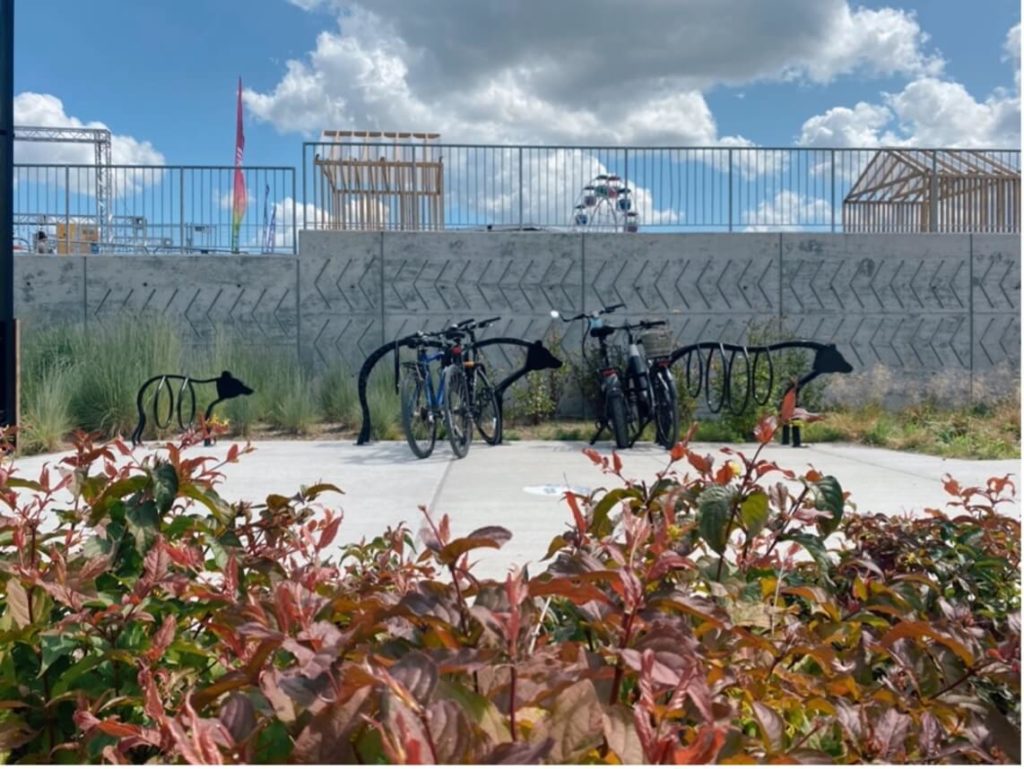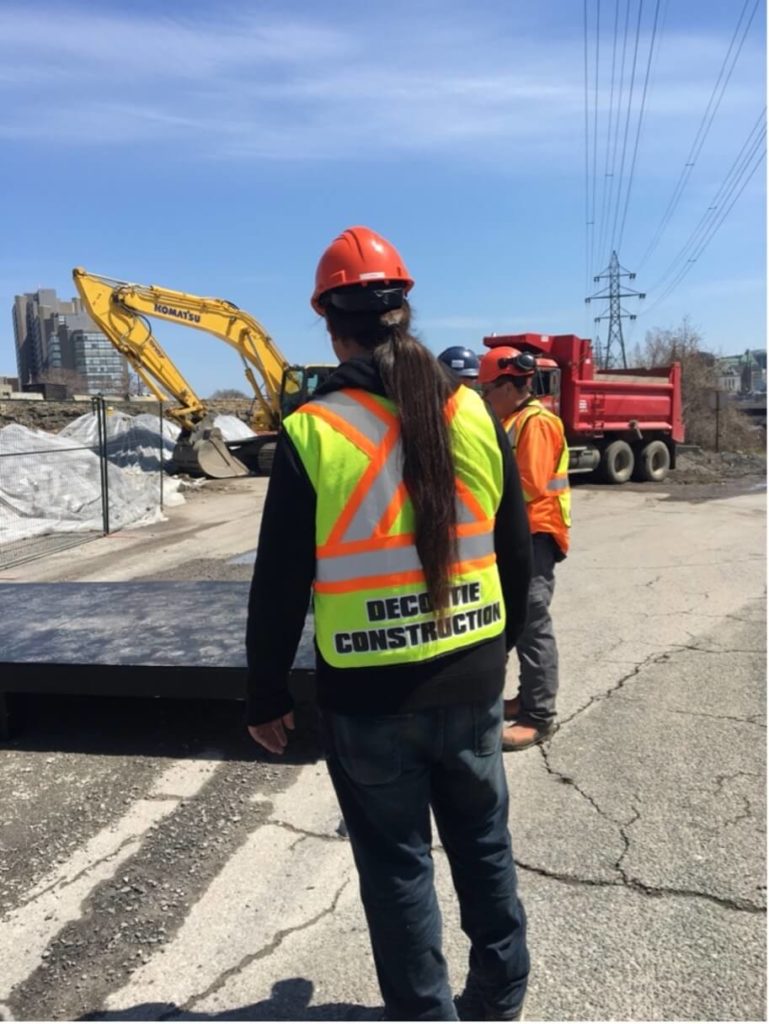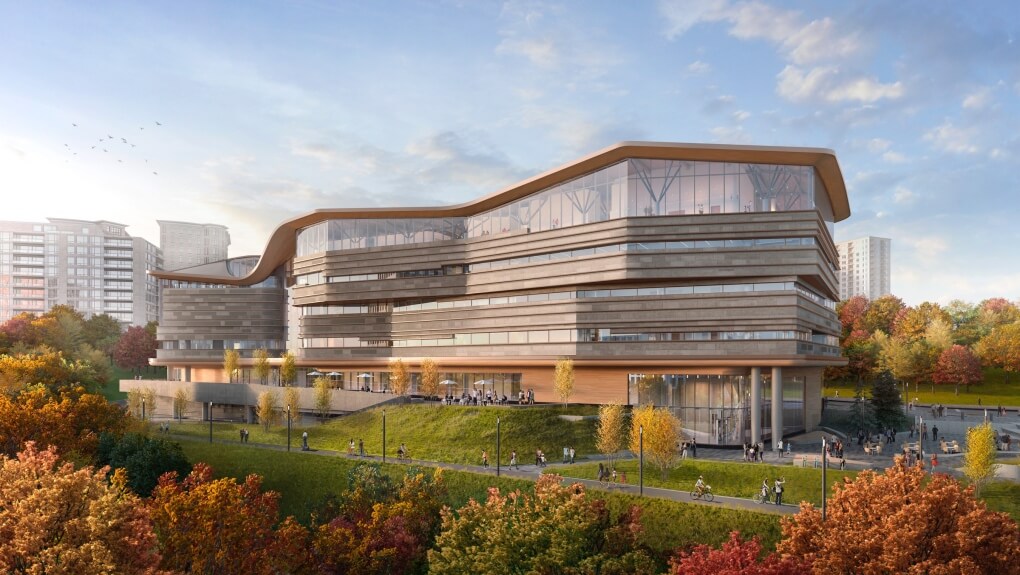On September 30th, Canada will be holding the first ever National Day for Truth and Reconciliation.
In this blog series, we will be taking a look at how Zibi strives to be a model of reconciliation in the National Capital Region by working with Algonquin Anishinàbe partners to confront the truth that systemic barriers in the Eastern Ontario and Western Quebec construction industry were in the way of achieving reconciliation with Algonquin Anishinàbe workers and companies. By leading the way on meaningful engagement, supporting Algonquin Anishinàbe partners in breaking down systemic barriers, and creating opportunities for employment, capacity building and cultural representation, Zibi has created a model that other developers can follow to begin the real work of reconciliation in our region.
Photo: Josée Bourgeois photographed by PJ Leroux @HighRezPhoto
Paving the way for reconciliation: The private sector has a role to play
While all of Western Quebec and Eastern Ontario sit on unceded unsurrendered Algonquin Anishinàbe territory, very few projects in the region have involved the Algonquin Anishinàbe in any meaningful way. Until recently, these communities were not even consulted on projects on their territories by the private sector. Hiring an Algonquin-owned company or Algonquin workers would not have been on the radar of developers.
Article 3 of the UNDRIP recognizes Indigenous peoples’ right to self-determination, which includes the right “to freely determine their political status and freely pursue their economic, social and cultural development.” To freely pursue their economic development, Indigenous peoples must have the same rights and opportunities as their Canadian counterparts.
“There’s no blueprint for reconciliation. It’s not about a right or a wrong way; it’s about trying,” shared Christina Ruddy, an Algonquin educator passionate about reconciliation, who provides consultation services to Zibi.
And that is exactly what companies like Kitigan Zibi’s Decontie Construction and the Zibi development have been doing.
“Our partnership with Zibi in and of itself brought attention to our company and Algonquin Anishinàbe trades people’s realities and barriers,” shared Wanda Thusky, Decontie Construction’s Director General.

A family of makwa bike racks in Wàsa Zibi Plaza designed by Algonquin artist Karl Chevrier from Long Point First Nation.
“We were provided a platform to share our reality through panel discussions, network meetings, news conferences, and more, which allowed us to bring greater visibility to all of the lingering issues and to encourage the construction industry in Ottawa-Gatineau to approach our nation, leaders and workforces for inclusion of our people in projects, just like Jeff Westeinde and Zibi did.”
Thusky shares that her company has successfully recruited, trained and employed Algonquin Anishinàbe tradespeople for various contracts in the region and they continue to do so by creating partnerships with the private sector.

Yancey Thusky of Decontie Construction Inc., on site at Zibi in 2017.
But reconciliation should not rest solely on the shoulders of Indigenous companies.
Here are some actions developers and the construction world can implement to support the UNDRIP declaration and reconciliation efforts in this part of Canada:
- Build capacity – Build in opportunities for Indigenous companies, labourers and workers to try new roles, or learn new skills while on the job. This includes developing and implementing a procurement process that prioritizes Indigenous People.
- Support learning opportunities – Partner with local training institutions to create specific programs and opportunities on and off reserve for Indigenous youth to learn about construction and remediation trades.
- Hire Algonquin companies and workers – When undertaking a new project on Algonquin territory, deliberately seek out Algonquin partners and workers for the project. Connect with the Pathway to Strengthening the Algonquin Anishinàbe Workforce (PSAAW) team for more information.
- Conduct meaningful engagement and consultation – It is “the rigueur” these days to consult with Algonquin Anishinàbe on any and all projects in the National Capital Region. While this is as it should be, consider ways to engage with communities in a way that is meaningful to them. For example, if you are consulting on a new park, how about thinking of creating a twin park in their community? Appreciate that a consultation plan isn’t a one size fits all for all communities; be open and adaptable.

Rendering of Ottawa’s new public library, Adisoke, scheduled to open in late 2024.
It is no longer enough to send a quick letter or questionnaire to ask for input on projects. The time has come for the private sector to be creative and to really think about creating opportunities and tangible benefits for Algonquin Anishinàbe youth and communities as part of their projects. We all have a role to play in leading reconciliation efforts.









